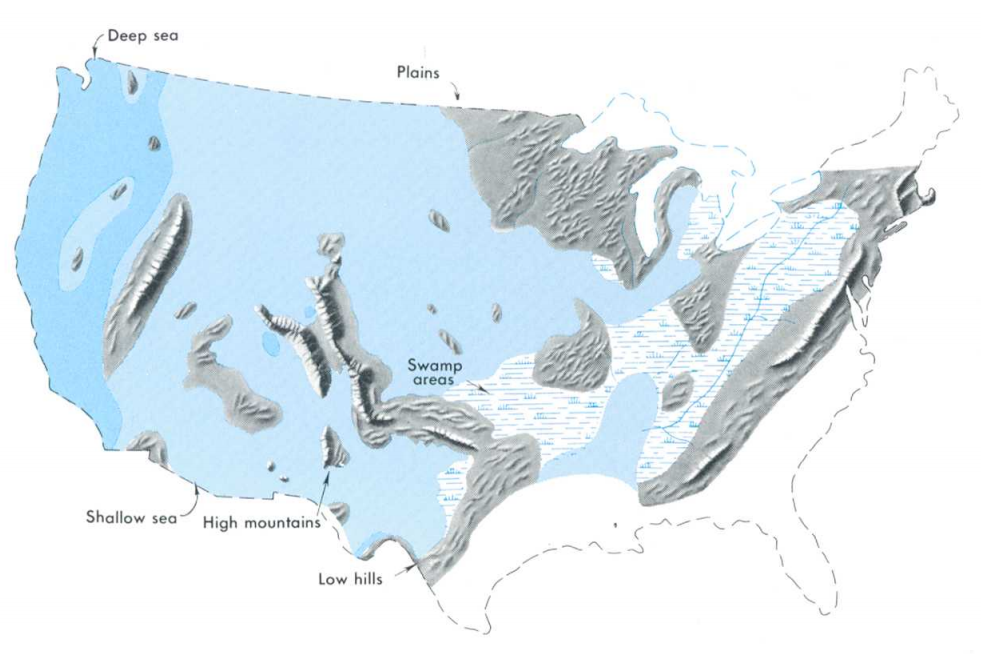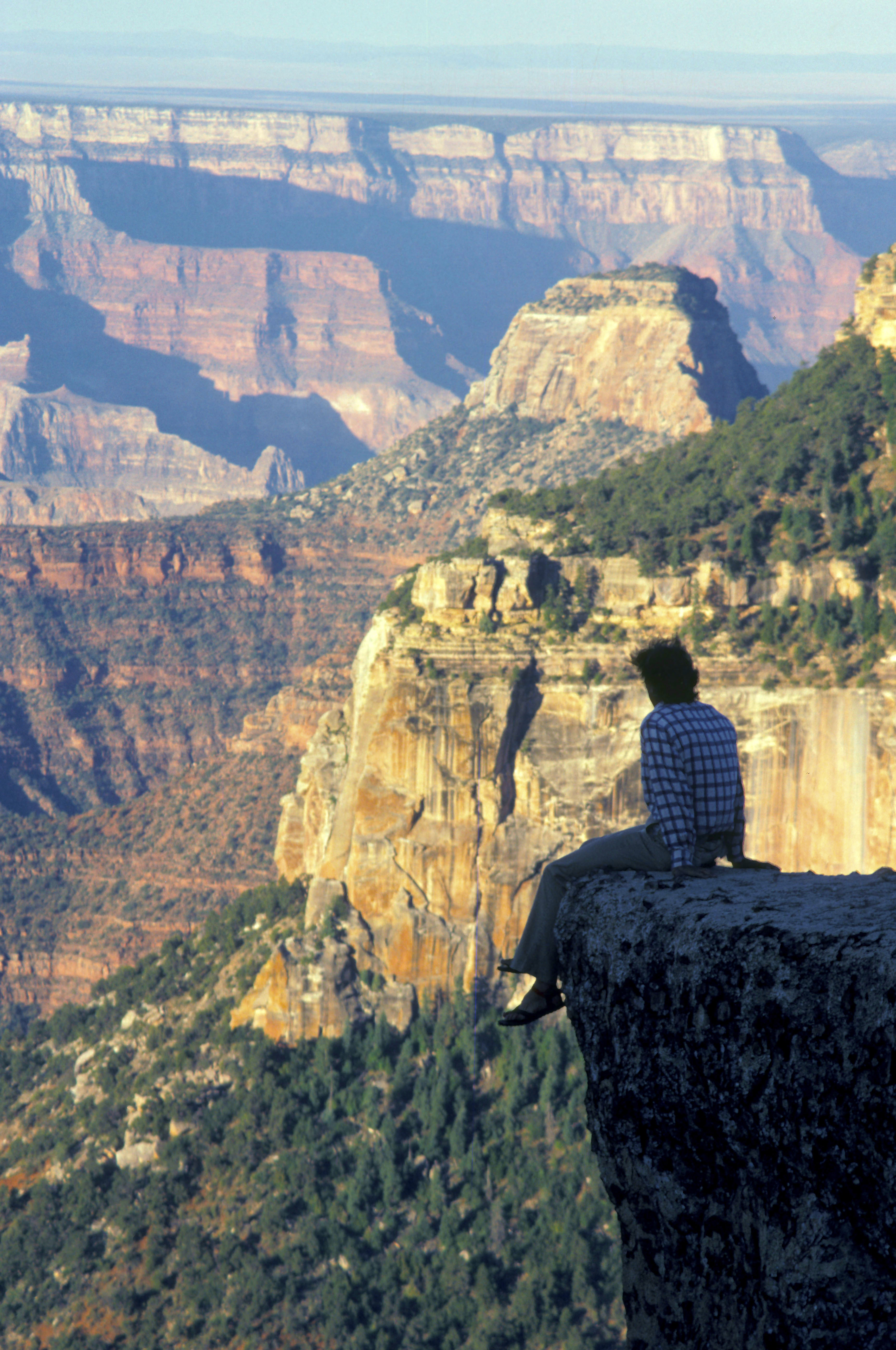|
Pollux Temple
Pollux Temple is a summit in the Grand Canyon, in Coconino County of northern Arizona, US. It is situated ten miles northwest of Grand Canyon Village, and less than one mile northeast of Jicarilla Point. Castor Temple is one mile northwest, and Diana Temple is one mile southeast. Topographic relief is significant as Pollux Temple rises nearly above the Colorado River in less than two miles. Pollux Temple is named for Pollux, the divine son of Zeus according to Greek mythology. Clarence Dutton began the practice of naming geographical features in the Grand Canyon after mythological deities. According to the Köppen climate classification system, Pollux Temple is located in a Cold semi-arid climate zone. Geology The top of Pollux Temple is composed of Permian Toroweap Formation overlaying cream-colored, cliff-forming, Permian Coconino Sandstone. The sandstone, which is the third-youngest of the strata in the Grand Canyon, was deposited 265 million years ago as sand dunes ... [...More Info...] [...Related Items...] OR: [Wikipedia] [Google] [Baidu] |
Tonto Trail
The Tonto Trail is a hiking trail on the South Rim of the Grand Canyon in Grand Canyon National Park, located in the U.S. state of Arizona. Access The Tonto Trail does not terminate at either rim of the Grand Canyon, but begins along the south bank of the Colorado River at Garnet Canyon (western end) and ends at Red Canyon (eastern end), also at the Colorado River. Through most of its 95-mile length, the trail runs along the Tonto Group, Tonto Platform, the bench in the Grand Canyon that separates the inner gorge from the upper canyon. 95 miles (152.9 km): Garnet Canyon to Red Canyon Approximate mileages between key points on the Tonto Trail: *11.6 miles (18.7 km): Garnet Creek to Bass Canyon *35.7 miles (57.5 km): Bass Canyon to Hermit Creek *12 miles (19.3 km): Hermit Creek to Bright Angel Trail (Indian Garden) *4.5 miles (7.2 km): Bright Angel Trail to South Kaibab Trail *21.3 miles (34.3 km): South Kaibab Trail to Grandview Trail (Horseshoe Mes ... [...More Info...] [...Related Items...] OR: [Wikipedia] [Google] [Baidu] |
Colorado River
The Colorado River () is one of the principal rivers (along with the Rio Grande) in the Southwestern United States and in northern Mexico. The river, the List of longest rivers of the United States (by main stem), 5th longest in the United States, drains an expansive, arid drainage basin, watershed that encompasses parts of seven U.S. states and two Mexican states. The name Colorado derives from the Spanish language for "colored reddish" due to its heavy silt load. Starting in the central Rocky Mountains of Colorado, it flows generally southwest across the Colorado Plateau and through the Grand Canyon before reaching Lake Mead on the Arizona–Nevada border, where it turns south toward the Mexico–United States border, international border. After entering Mexico, the Colorado approaches the mostly dry Colorado River Delta at the tip of the Gulf of California between Baja California and Sonora. Known for its dramatic canyons, whitewater rapids, and eleven National parks of the ... [...More Info...] [...Related Items...] OR: [Wikipedia] [Google] [Baidu] |
Redwall Limestone
The Redwall Limestone is an erosion-resistant, Mississippian age, cliff-former, cliff-forming geological formation that forms prominent, red-stained cliffs in the Grand Canyon. these cliffs range in height from to . It is one of the most fossiliferous formations exposed in the Grand Canyon region. Nomenclature In 1875, GilbertGilbert, G.K., 1875. ''Report upon the geology of portions of Nevada, Utah, California, and Arizona, Chapter 6.'' In Wheeler, G.M., ed., pp. 17-187, ''Report on the Geographical and Geological Explorations and Surveys West of the One Hundredth Meridian'', vol. 3. U.S. Geological and Geographical Survey, Publication of the Wheeler Survey, Washington, D.C., 681 pp. recognized and named the Redwall Limestone for the red coloration of its escarpment on either side of Grand Canyon. As originally defined by him, it included some strata younger and older than as it is currently defined. Later in 1910, DartonDarton, N. H., 1910. ''A reconnaissance of parts of nort ... [...More Info...] [...Related Items...] OR: [Wikipedia] [Google] [Baidu] |
Mississippian (geology)
The Mississippian ( ), also known as Lower Carboniferous or Early Carboniferous, is a subperiod in the geologic timescale or a subsystem of the geologic record. It is the earlier of two subperiods of the Carboniferous period lasting from roughly 358.9 to 323.2 million years ago. As with most other geochronologic units, the rock beds that define the Mississippian are well identified, but the exact start and end dates are uncertain by a few million years. The Mississippian is so named because rocks with this age are exposed in the Mississippi Valley. The Mississippian was a period of marine transgression in the Northern Hemisphere: the sea level was so high that only the Fennoscandian Shield and the Laurentian Shield were dry land. The cratons were surrounded by extensive delta systems and lagoons, and carbonate sedimentation on the surrounding continental platforms, covered by shallow seas. In North America, where the interval consists primarily of marine limestones, i ... [...More Info...] [...Related Items...] OR: [Wikipedia] [Google] [Baidu] |
Supai Group
The Supai Group is a slope-forming sequence of mixed red beds and limestones that outcrop in the Colorado Plateau. The group was laid down during the Pennsylvanian to Lower Permian. Cliff-forming interbeds of sandstone are noticeable throughout the group. The Supai Group is quite well exposed throughout the Grand Canyon in northwest Arizona, as well as local regions of southwest Utah, such as the Virgin River valley region. Known as the ''Supai Formation'', it occurs in Arizona at Chino Point, Sycamore Canyon, and famously at Sedona as parts of Oak Creek Canyon. In the Sedona region, it is overlain by the Hermit Formation, and the colorful Schnebly Hill Formation.Jenney, J.P., and Reynolds, S. J., ''Pennsylvanian and Permian geology of Arizona''. ''Tucson, Arizona Geological Society Digest'', 17, pp. 313~347.Blakey, R.C., 2003. ''Supai Group and Hermit Formation'' in: Beus, S.S., Morales, M., eds., pp. 136–162, ''Grand Canyon Geology'', 2nd. Oxford University Press, New Y ... [...More Info...] [...Related Items...] OR: [Wikipedia] [Google] [Baidu] |
Pennsylvanian (geology)
The Pennsylvanian ( , also known as Upper Carboniferous or Late Carboniferous) is, on the International Commission on Stratigraphy, ICS geologic timescale, the younger of two period (geology), subperiods of the Carboniferous Period (or the upper of two system (stratigraphy), subsystems of the Carboniferous System). It lasted from roughly . As with most other geochronology, geochronologic units, the stratum, rock beds that define the Pennsylvanian are well identified, but the exact date of the start and end are uncertain by a few hundred thousand years. The Pennsylvanian is named after the U.S. state of Pennsylvania, where the coal Bed (geology), beds of this age are widespread. The division between Pennsylvanian and Mississippian (geology), Mississippian comes from North American stratigraphy. In North America, where the early Carboniferous beds are primarily marine limestones, the Pennsylvanian was in the past treated as a full-fledged geologic period between the Mississippian ... [...More Info...] [...Related Items...] OR: [Wikipedia] [Google] [Baidu] |
Hermit Formation
The Permian Hermit Formation, also known as the Hermit Shale, is a nonresistant unit that is composed of slope-forming reddish brown siltstone, mudstone, and very fine-grained sandstone. Within the Grand Canyon region, the upper part of the Hermit Formation contains red and white, massive, calcareous sandstone and siltstone beds that exhibit low-angle cross-bedding. Beds of dark red crumbly siltstone fill shallow paleochannels that are quite common in this formation. The siltstone beds often contain poorly preserved plant fossils. It outcrops across northwestern Arizona from the Sedona area, and it outcrops in the Grand Canyon and the western Mogollon Rim, into the Aubrey Cliffs. It forms steep slopes that are typically mostly covered by debris and colluvium derived from the overlying sedimentary strata. Nomenclature As summarized by McKee in 1982,McKee, E.D. 1982a''The Supai Group of Grand Canyon.''''U.S. Geological Survey Professional Paper.'' 1173, pp. 1-504. the sedimentar ... [...More Info...] [...Related Items...] OR: [Wikipedia] [Google] [Baidu] |
Coconino Sandstone
The Coconino Sandstone is a geologic formation (geology), formation composed of light-colored quartz arenite of Aeolian processes, eolian origin. It erodes to form conspicuous, sheer cliffs in the upper walls of Grand Canyon, as part of the Mogollon Rim to the south and east, and in many other parts of the Colorado Plateau region. The Coconino Sandstone is well known for its fossil trackways of Terrestrial animal, terrestrial invertebrates and vertebrates and Cross-bedding, large-scale cross-stratification.Middleton, L.T., D.K. Elliott, and M. Morales (2002) ''Coconino Sandstone,'' in S.S. Beus and M. Morales, eds., ''Grand Canyon Geology.'' Oxford University Press, New York. Eastward of a north–south line from Monument Creek to Fossil Creek, the Coconino Sandstone overlies and interfingers with and grades into the Schnebly Hill Formation, which is equivalent in part to the De Chelly Sandstone in Utah. In this area, it underlies the Kaibab Limestone. Further eastward, the Coc ... [...More Info...] [...Related Items...] OR: [Wikipedia] [Google] [Baidu] |
Toroweap Formation
The Toroweap Formation outcrops as a distinct layer of generally darker, interbedded slope- and cliff-forming strata lying between the brighter colored cliffs of the Kaibab Limestone above, and Coconino Sandstone below. It outcrops in Grand Canyon, Arizona, Southwestern United States, found throughout walls of the South Rim, Grand Canyon, and the North Rim, of the Kaibab Plateau. Also, it outcrops in the Kaibab's southeast extension to Cape Royal, the Walhalla Platea. The formation is also found in southeast Utah and west-central Nevada.Sorauf, J. E. and G. H. Billingsley, 1991, ''Members of the Toroweap and Kaibab Formations, Lower Permian, northern Arizona and southwestern Utah.'' The Mountain Geologist, 28(1):9–24. Nomenclature The complex history of the stratigraphic classification of the strata comprising the Toroweap Formation began in 1875 when geological expeditions studied the geology of the Colorado Plateau and first recognized the occurrence of uppermost Paleozoic s ... [...More Info...] [...Related Items...] OR: [Wikipedia] [Google] [Baidu] |
Permian
The Permian ( ) is a geologic period and System (stratigraphy), stratigraphic system which spans 47 million years, from the end of the Carboniferous Period million years ago (Mya), to the beginning of the Triassic Period 251.902 Mya. It is the sixth and last period of the Paleozoic Era; the following Triassic Period belongs to the Mesozoic Era. The concept of the Permian was introduced in 1841 by geologist Sir Roderick Murchison, who named it after the Perm Governorate, region of Perm in Russia. The Permian witnessed the diversification of the two groups of amniotes, the synapsids and the Sauropsida, sauropsids (reptiles). The world at the time was dominated by the supercontinent Pangaea, which had formed due to the collision of Euramerica and Gondwana during the Carboniferous. Pangaea was surrounded by the superocean Panthalassa. The Carboniferous rainforest collapse left behind vast regions of desert within the continental interior. Amniotes, which could better cope with these ... [...More Info...] [...Related Items...] OR: [Wikipedia] [Google] [Baidu] |
Cold Semi-arid Climate
Cold is the presence of low temperature, especially in the atmosphere. In common usage, cold is often a subjective perception. A lower bound to temperature is absolute zero, defined as 0.00K on the Kelvin scale, an absolute thermodynamic temperature scale. This corresponds to on the Celsius scale, on the Fahrenheit scale, and on the Rankine scale. Since temperature relates to the thermal energy held by an object or a sample of matter, which is the kinetic energy of the random motion of the particle constituents of matter, an object will have less thermal energy when it is colder and more when it is hotter. If it were possible to cool a system to absolute zero, all motion of the particles in a sample of matter would cease and they would be at complete rest in the classical sense. The object could be described as having zero thermal energy. Microscopically in the description of quantum mechanics, however, matter still has zero-point energy even at absolute zero, beca ... [...More Info...] [...Related Items...] OR: [Wikipedia] [Google] [Baidu] |
Köppen Climate Classification
The Köppen climate classification divides Earth climates into five main climate groups, with each group being divided based on patterns of seasonal precipitation and temperature. The five main groups are ''A'' (tropical), ''B'' (arid), ''C'' (temperate), ''D'' (continental), and ''E'' (polar). Each group and subgroup is represented by a letter. All climates are assigned a main group (the first letter). All climates except for those in the ''E'' group are assigned a seasonal precipitation subgroup (the second letter). For example, ''Af'' indicates a tropical rainforest climate. The system assigns a temperature subgroup for all groups other than those in the ''A'' group, indicated by the third letter for climates in ''B'', ''C'', ''D'', and the second letter for climates in ''E''. Other examples include: ''Cfb'' indicating an oceanic climate with warm summers as indicated by the ending ''b.'', while ''Dwb'' indicates a semi-Monsoon continental climate, monsoonal continental climate ... [...More Info...] [...Related Items...] OR: [Wikipedia] [Google] [Baidu] |







